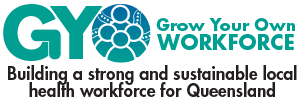Counties Manukau
Health
- Outside-in
- Health Sector
- New Zealand

The Challenge
Counties Manukau in South Auckland is the fastest growing district in New Zealand. It is multi-ethnic, but minorities are severely under-represented in the health workforce.
The Solution
- to create a seamless school to employment pipeline that supports and develops local talent
- to double the number of Maori and Pasifika people working within the organisation, across all health professions
- to create a workforce that better reflects the diversity of the communities they serve
Implementation
Counties Manukau Health (CM Health) partnered with local schools, identified by expression of interest, to become Health and Science Academies (HSAs). The HSA program is designed around supporting students to gain direct entry into tertiary level sciences, through extra tuition in science, maths and English, and other activities, including hospital visits, panel sessions with health professionals and academic mentoring.
Organisational strategies
- CM Health has embarked on a number of equal opportunity initiatives to complement the HSAs.
- All Maori and Pasifika candidates are short-listed for priority workforces.
- A senior Maori or Pasifika representative is always included in interview panels for priority workforces.
- Workforce recruitment targets are set to ensure that the diversity of the workforce reflects the diversity of the local population by 2025.
Partnership strategies
- Initially three schools were selected to become HSAs.
- Initial funding to implement the HSAs was provided by a partnership with the Tindall foundation, a charitable foundation that operates across New Zealand. In 2016, CM Health agreed to fund the three colleges directly.
- A Grow Our Own Workforce Governance Group meets up to four times a year to provide strategic guidance and monitor the ongoing implementation of the academies.
- An operational leadership group was established between CM Health and the Principals of each of the colleges to improve collaboration and share best practice.
Program design strategies
- The academies support Maori and Pasifika students with an interest in, and aptitude for, careers in health. Selection is made on students evidencing commitment, alongside some academic ability.
- The HSA program is a joint endeavour between families, community and teachers and regular parent information events are held.
- To profile the wide range of possible health careers, CM Health provides events, hospital visits and talks with health professionals. The provision of hands-on experiences of health sector jobs, and opportunities to talk to Maori and Pasifika health professionals, helps to increase student motivation and sense of purpose.
- The HSA program is designed to support students to gain direct entry into tertiary level sciences. Compared to mainstream students in Year 11, who have five lessons of science in a six-day timetable, students in the HSAs have ten lessons.
- The program is recognised as a long-term strategy. Once the students transition into tertiary study, depending on their area of studies, they won’t be ready for employment for a minimum of three years after that.
Results
- Above-average school attendance rates are being maintained by Academy students.
- One of the students in the first cohort was inspired to study nursing and is now employed in CM Health. She is the first in her family to be university educated, and her story has been featured on local news networks in Auckland.
- The Pasifika workforce has increased from 9% to 11% since 2010.
- The Maori workforce has increased from 5% to 8% since 2010.
Lessons Learned
- It is essential to involve Maori and Pasifika leadership when designing and implementing Maori and Pasifika health workforce development programs.
- Ensure a clear vision and purpose.
- Ensure joint strategic and operational planning at the right level with a well-structured workforce plan.
- Occasionally family-support can turn into family-pressure when students are expected to pursue a career to which they do not have initial inclination.
- The innovations being generated by the Academies draw strongly on the advantages of being a small and focused learning community within the school.
- Students need to be able to see a workplace, and be able to actively imagine themselves doing the role.
- Without surrounding attention and encouragement from families and teachers, books and resources are not helpful on their own.
REQUIREMENTS FOR
REPLICATION
Do you…
- have local schools with the capability and capacity to offer health science subject education?
- have access to transport for students?
- have culturally-appropriate and safe mentoring and tuition?
- have organisational understanding of and support for the importance of a culturally diverse workforce?
- have Equal Employment Opportunity (EEO) programs that support nondiscriminatory employment practices?
Can you…
- meet the specific cohort’s training needs?
- champion and facilitate the program?
- provide culturally-appropriate and safe development opportunities and methods?
- offer extra tuition and mentoring?
CONSIDERATIONS FOR PROGRAM SCALING
Do you…
- have realistic job opportunities and student numbers required to meet this?
- have the required financial and personnel resources?
- have sufficient interested student numbers?
- have host organisations, teachers and trainers who are supportive of diversity and can provide culturally-appropriate and safe environments?
- have sufficient placement and development opportunities?
POTENTIAL RISKS
What if…
- you don’t have an organisational culture and practices that support diversity?
- the newly-qualified workforce seeks opportunities elsewhere (out of region or even country)?
- you aren’t prepared for the length of time required to develop trainees to competence and fill roles?
- there are changes to funding or policy priorities?
